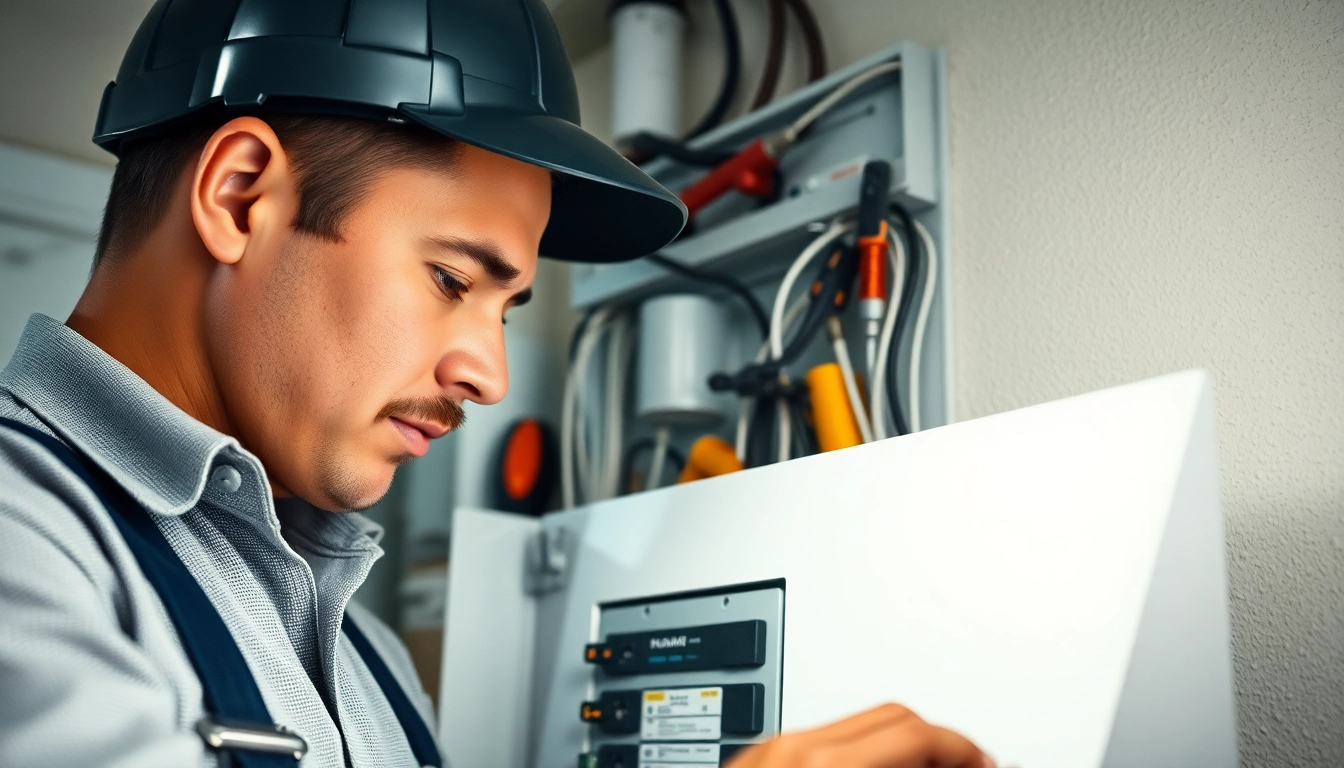The Basics of Electrical Panel Upgrades
When it comes to managing your home’s electricity, the electrical panel acts as the central hub, controlling the power supply to various circuits and devices throughout your home. However, an outdated or insufficient panel can lead to numerous issues. As home technology evolves and power demands increase, understanding when and why to opt for an electrical panel upgrade is crucial for homeowners. This guide will delve into the technicalities of electrical panel upgrades, helping you assess whether it’s time to update your system.
What is an Electrical Panel?
An electrical panel, often referred to as a breaker box, is a metal box that houses fuses or circuit breakers, which control the electrical supply to a home. It serves as a connection point between the utility power supply and the electrical distribution system in your house. The electrical panel is responsible for distributing electricity safely across different circuits while protecting these circuits from overloads and short circuits.
Why Upgrade Your Electrical Panel?
Upgrading your electrical panel typically becomes necessary due to the increasing energy demands of modern appliances and technologies such as HVAC systems, electric vehicle (EV) chargers, and smart home devices. A higher amperage electrical panel allows for greater electrical capacity and improved energy distribution throughout your home. This ensures a safer environment by preventing potential electrical fires caused by overloading circuits.
Signs You Need an Upgrade
There are several indicators that it may be time to consider an upgrade:
- Frequent Circuit Breaker Trips: If your breakers frequently trip, it may indicate that your electrical panel cannot handle the load demanded by your appliances.
- Old Wiring: Homes built before the 1980s often have outdated panels that may not meet current safety standards and power requirements.
- Inability to Accommodate New Appliances: Adding high-demand appliances like an HVAC system or an EV charger may push your current panel beyond its limits.
- Flickering Lights: Lights that flicker or dim when you turn on other appliances can be a sign of insufficient power distribution.
- Burnt Smell or Discoloration: Any burnt smell or discoloration around your panel is a serious red flag that requires immediate attention.
Costs and Budgets for Your Electrical Panel Upgrade
Understanding Cost Factors
The costs associated with upgrading an electrical panel can vary widely based on several factors, including:
- Panel Size: The amperage of the new panel (commonly 100A or 200A) significantly influences the overall cost.
- Labor Costs: Hiring a licensed electrician is essential for safety and compliance with local codes. Labor costs can vary by region.
- Permit Fees: Upgrading your electrical panel typically requires permits, which may add to the overall expense.
- Additional Work: If your current wiring is inadequate, additional rewiring must be factored into your budget.
Comparing Costs: 100A vs. 200A Upgrades
The most common upgrade is from a 100A to a 200A panel. Depending on the specifics of the installation, a 100A upgrade can cost anywhere from $800 to $2,000, whereas a 200A upgrade typically ranges from $1,300 to $3,000, according to various industry sources. The higher amperage provides more capacity for future growth and electrical demands, making it a beneficial investment for most homeowners.
Budgeting for Additional Electrical Work
When planning for an electrical panel upgrade, it’s important to anticipate additional costs for related electrical work. Homeowners may need to budget for updates to home wiring, the installation of additional outlets, or changes to existing circuits to accommodate the increased power supply. This can lead to total costs being significantly higher than just the panel replacement itself.
Choosing the Right Electrical Panel for Your Home
Types of Electrical Panels Available
There are several types of electrical panels available on the market, primarily including:
- Standard Panels: These are commonly used in most residential applications and typically have re-settable circuit breakers.
- Smart Panels: These panels can be monitored and controlled via smartphone apps, offering features like energy tracking and remote management.
- Subpanels: Used in homes with extensive electrical needs, subpanels distribute power from the main panel to specific areas of the house.
How to Select the Right Amperage
When selecting a panel’s amperage, consider the total power load of your home. A general guideline suggests a minimum of a 200A service for newer homes, but if you plan on adding large appliances or an EV charger, even larger capacities (such as 400A) may be warranted. Evaluate the current and future electrical demands to make an informed choice.
Local Codes and Manufacturer Recommendations
Always consult with local building codes and the manufacturers’ specifications during your upgrade process to ensure compliance and safety. Local regulations can dictate minimum requirements for installation, and following manufacturer guidelines can prevent future issues.
Step-by-Step Process of an Electrical Panel Upgrade
Preparing for Installation: What to Expect
The preparation phase of an electrical panel upgrade involves several steps:
- Assessment: An electrician should assess your current electrical system to determine the necessary upgrades.
- Permit Application: A permit is usually required for electrical work and should be obtained before any installation begins.
- Scheduling: Plan the upgrade for a time that minimizes disruption in your household.
What Happens During the Upgrade?
The actual upgrade process typically unfolds as follows:
- Power Shutdown: The electrical system will be powered down to ensure safety.
- Removal of Old Panel: The existing panel will be safely disconnected and removed.
- Wiring Adjustments: Any necessary rewiring will take place to prepare the new panel.
- Installation of New Panel: The new panel will be installed, connected to the existing circuits and power supply.
Post-Upgrade Testing and Safety Checks
After installation, rigorous testing is essential:
- Functionality Test: The electrician will check each circuit to ensure proper installation.
- Compliance Check: Ensuring the installation complies with local codes and safety regulations is critical.
- Documentation: Homeowners should keep all paperwork, including permits and inspection reports, for future reference.
Maximizing the Value of Your Electrical Panel Upgrade
Enhancing Home Safety with Modern Panels
Modern panels offer enhanced safety features such as surge protection, which can safeguard your home from voltage spikes. They also employ circuit breakers designed to trip at safer limits, reducing the risk of electrical fires.
Long-term Efficiency and Energy Savings
Investing in a new electrical panel can lead to significant long-term energy savings. Newer technologies offer improved performance and efficiency, which can reduce monthly utility bills. Additionally, having up-to-date equipment can allow for better integration with energy-efficient home devices.
Available Incentives and Tax Benefits for Upgrades
Many states offer tax credits and rebates for electrical upgrades, especially when they incorporate energy-efficient solutions. Familiarize yourself with local programs, as these incentives can significantly offset upgrade costs.


